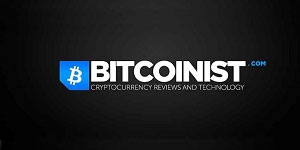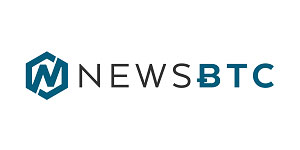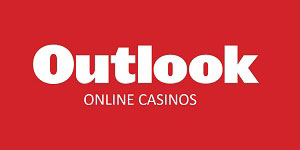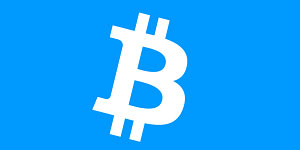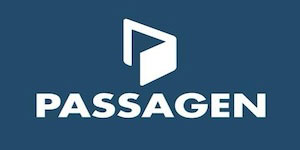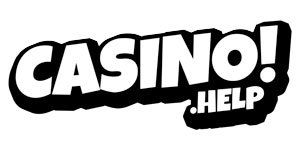Comics Interview: Dissected – Issue #3
Welcome to the latest instalment of a brand-new feature here on Nerdly, where one of our comic gurus, Ian Wells, delves into comics history and dissects Comics Interview, the long-running journal of interviews and criticism from David Anthony Kraft.

A Yak with DAK
In his opening editorial this week David uses the space to talk about newcomers to the Comics Interview team as well as introduce the reader so some of the team who he hasn’t called out previously. Joining as contributing editors are Steve Ringgenberg and Mitch Cohn. Ringgenberg has previously worked in a similar capacity on Amazing Heroes and The Comics Journal. Whilst Cohn has been working at Fantacochronicles. Rick Oliver and Len Sapp are added to the special thanks credit. Robin Snyder joins as a transcriber. One name who has been in every issue who I couldn’t find anything about online is Lesley Benjamin-Aull. Here DAK gives her props for keeping Comics Interview ticking with her “accounting acumen and scheduling aid.”
Ad Space
First I want to shout out the full-page ad for Alpha Flight #1, this is a big comic for me. Comics Interview treats its ad space the right way. In the 90s Wizard magazine would do it all the wrong way. Selling ad space to the highest bidder, regardless of the quality of the ad and quality of the final product. It became a battleground, with publishers pandering to Wizard in favour of good reviews. Marvel didn’t play ball and were left on the outside, whereas Image played the game and maybe those first round of books wouldn’t have hit as strong without Wizard. There is no pandering in CI three issues in. Every interview 9 times out of 10 is proceeded by a full-page ad for that comic. The cover feature also gets the full back cover with no text. It’s a solid premise as it puts an image in the reader’s mind going into the interview and it works. I saw the Red Circle ad for Black Hood #1 with art by Alex Toth and Gray Morrow and immediately sought it out on eBay!
The Raven
P. Craig Russell and Don McGregor are both returning to Killraven for the seventh release in the Marvel Graphic Novel line. They had both worked on the character previously with McGregor having a long association with the first series, whilst Russell has been away from Killraven for 6 years. Before the return he had been working on Elric, with McGregor having worked at Warren and Eclipse pre 1983. McGregor admits to being a little apprehensive about returning to Killraven. As he thought the opportunity would never come up he used some of his planned ideas in Sabre. I found the stuff about influences and swiping to be the most interesting take away from the art talk. For instance he says it is more obvious when other artists swipe poses from Kirby because of his unique style, as opposed to when people swipe from Hal Foster whose figures are more classic. Connecting to his own work he cites when people are able to call out his Barry Smith and Art Adams swipes/influence but there are fewer people noticing when his work is influenced by John Buscema, again a contrast between classic and stylized. I also like how is able to talk about his weaknesses, in fact it is something that comes up early in the interview and part of the reason he is excited about returning to the character. Because he has honed his skills he feels his anatomy and depiction of technology will be stronger this time around.
Titan Talk
Marv Wolfman is riding a wave at DC in 1983. Writing both Teen Titans and Superman, so I found it funny the first question was about what it was like being Editor in Chief at Marvel. It is mentioned then that he has just done a huge interview with The Comics Journal so I wonder if he dropped some bombs in that interview that they were hoping to follow up on. I believe newer readers today will find it hard to believe Teen Titans was once DC’s best-selling comic and it went toe-to-toe with X-Men in the sales. I have read the first trade of Wolfman and Perez’s series and I was a little underwhelmed. Here however Wolfman says he thinks the series finds its feet by #8 so maybe I just missed out. I would say the series’ biggest high ‘The Judas Contract’ does hold up against some of the X-Men’s best arcs. I like how Wolfman doesn’t hold back on plot details in this interview, compared to nowadays when everything revolves around social media. He says about Terra’s upcoming betrayal and Robins’s evolution. I’m not naive about how far out comics are planned, like I said I just like how open he is about it. Also, it is worth remembering that the series was relaunched with a new title before all this happened. Moving onto Superman duties and it makes for a more frustrating read. It starts off good with talk of all the changes he and Gil Kane are making, which is refreshing to read when Superman is such a massive IP for DC/Warner that they can make changes in the comics without pushback. But then he says he likes Superman stories with an older vibe, stuff in line with what he enjoyed reading in his younger days. I understand where he is coming from, you love something about a character and you get a chance to write them, you would want to do your version of that. But then how does he evolve as a character? The readers want something new, the creators do what they would want to read. Lastly touching on his editing duties at DC and linking to the first interview in Comics Interview #1. Omega Men has faced some backlash over violence. Wolfman says that DC is considering an in-house movie-style rating for comics that go out without the Comics Code approval.
Bob Larkin
This is a short and sweet interview, Larkin wasn’t a name I was familiar with reading this interview. At the time he was mainly creating paintings for paperbacks, as well as providing covers for Marvel hardcover and trade paperback collections. Despite its brevity, there is a lot to take in about working in the industry, especially for any readers who may have had dreams of breaking in. In the previous issues there have been creators talking up the pros of being on contract for one publisher or another, as well as the standard rates they get for creating characters or logos. Larkin as a freelancer paints a different picture. He says how the previous year was non stop for him. Work piled up and became rushed as he woke up at 12 and worked through till 6am. Then all of a sudden this year everything has just stopped.
Flying The Flagg
American Flagg marks Howard Chaykin’s return to comics after two years of doing paperback covers. Before that break he was best known for his work on the Star Wars comics. He feels it is the right time to return with American Flagg firstly because First Comics put a great deal on the table and secondly he could only tell the story in the comics format. This is something I often find coming up in conversation when you are talking about the differences between comics and comic book movies and why I think changes are made to plots. He says DC or Marvel would never publish American Flagg as all they want is superheroes. This is something that is always thrown at them, but I understand from a business view if it works why reinvent the wheel? The main reason Chaykin is returning now with this comic is “…re-establish myself on the only functioning growth industry in publishing.” Doesn’t it make you proud to read that? Also hindsight is a beautiful thing with the crash ten years away! American Flagg has been on my radar for some time, it is just so hard to track a good inexpensive run down. The way Chaykin talks with passion about all the influences that went into its creation only reinforces my desire to want to read it, even if it was just the first 12 issues that the series was originally slated for before running to over 50.
Legendary Letters
Ringgenberg starts off his interview with Todd Klein with an anecdote about how the two first met and I certainly appreciate the personal touch. He then doesn’t waste any time getting straight into the shop talk with his first question “How do you go about designing a logo?” Klein doesn’t disappoint with his answer, going deep on the technical side of it. Most of which goes over my head as a humble reviewer. After doing a number of original sketches in pencil for editors to choose from, he will then do he final one in technical pens. He is then talking about learning line weight from John Workman, drawing on plastic vellum and saying that zipatone is absolutely no good for logos. Name dropping some current heroes/influences he names Barry Smith, Mike Kaluta and Bernie Wrightson. Klein also shares the sentiment of Novak from #1 about how lettering is like the score in a movie. One wrong note and the experience is ruined.
Dick Goldwater
Dick Goldwater was essentially born into comics royalty as his father was the creator of Archie Comics. The interview is to promote Red Circle comics which is the superhero line for Archie and they are bringing a star-studded cast of artists along with them. Gray Morrow, Alex Toth and Jim Steranko. The belief is that these big names will give them pulling power when it comes to competing in the direct market for the first time, as Archie comics are sticking with news stand distribution. Goldwater talks in depth about the marketing strategy for Archie after the success of the animated series on CBS. He says that hasn’t been a big spike increase in sales. But sales have been helped by CBS paying for rental space in big brand shops on point-of-sale units. Here digest sized comics are doing really well for them. Every time I hear people say cinemas should carry comics alongside big releases I laugh. But this information would suggest with the right product, in the right place, at the right time it could work. At the moment in the UK big book store Waterstones seem to be scaling back on American comics and you would think with big studio backing they could work out a similar arrangement and push product in those environments.
Gene Pelc
Pelc is the head of Merchandising for Marvel in Japan. My biggest problem with these salespeople interviews is that they all just read like patting themselves on the back and money counting. Also, it feels like with every interview of this nature we get it is foreshadowing the ’90s crash. I feel like I will have to start a Watchmen style Doomsday clock. Pelc does portray an almost opposite picture of how things are to today. Marvel it seems are trying so hard to force their IP into other media. On every project he talks about it comes with the caveat ‘loosely based on’ or ‘we have had to change this and we have had to change that.’
Paris Report
This is an interesting piece bout the comic scene in France. Zimmerman believes at the time of this article France is publishing more comics than in the US Golden Age. Distribution and presentation is better. Both of these are still true today. Someone I am following on Twitter has recently been in Europe and the posts of their comic hunting has been amazing. The quality and quantity of Marvel and DC collected editions you can get is staggering. Countless different formats, 90% of them are hardbacks and there is stuff long out of print in US for as low as 10 Euros! To back this up I would say the two best products Marvel have put out in the last five years have been the Grand Design treasury edition collections and the Mighty Marvel Masterworks collections. He says how American language comics are easily accessible. I just can’t imagine walking into a shop in UK or Us and them having a section dedicated to foreign language comics. Of course I’ve only visited a limited number of shops but it’s not something I have come across. I have experienced it from the other side and on a holiday in Greece once I picked up a few comics and even my first Wizard. I will hold it against Zimmerman though that he can talk for so long about French comics and not mention Metal Hurlant!
Letters
We are treated to three whole pages of fan letters in this issue. There is a pretty even split of what readers are liking and not liking about the previous two issues. DAK recognises the name Barry Dutter, he would often write into She-Hulk when DAK was writing the series and ask for the series to be cancelled. In a response to one letter he also mentions some of the interviews expanding to where they will be printed over two issues. Mark Shainblum in his letter has a stab at guessing the fonts for the letters in Jim Novak’s logo. I will pop it up on Twitter @IanWells87 and everyone can play along. The most interesting letter came from a Mr. Kurt Busiek who offered up some constructive criticism so DAK invites him to join the crew. In March of 1983 he had written his first comics work in Green Lantern #162, I will watch the credits pages to see if he joins the ranks. In his letter he points to Comics Feature by Richard Howell and Carol Kalish as his gold standard for comics interview publications. I will check this out too.

